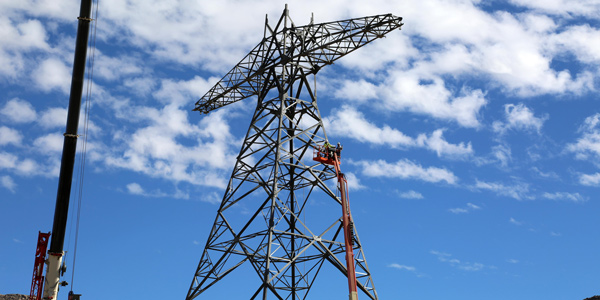By Jason Fordney
Sempra Energy on Tuesday became the third California-based energy company to promise a “three-pronged” effort to recover costs related to wildfires and push back on liability for having potentially caused some of the state’s deadly — and costly — fires.
During an earnings call, Sempra Energy CEO Debra Reed said that many factors are contributing to the worsening scope and spread of wildfires and that “it is irrational to place all of the burden strictly on utilities.” She said a hearing held in the Assembly on Monday on the wildfire issue was a favorable development. (See Wildfires Ignite Worries at CPUC, Legislature.)
“There is a focus now on how to resolve this inverse condemnation issue now legislatively,” she said, adding that the California Public Utilities Commission (CPUC) and Legislature are working more closely on the issue. “I think there is going to be some movement in that area.”
The “inverse condemnation” principle states that “the costs of a public improvement benefiting the community should be spread among those benefited rather than allocated to a single member of the community.” California utilities have cited the principle in their attempts to recover the cost for repairing infrastructure damaged by wildfires.
CPUC in late November denied $379 million in cost recovery to Sempra subsidiary San Diego Gas and Electric (SDG&E) for wildfires that occurred in 2007, despite the company’s use of the principle. (See Besieged CPUC Denies SDG&E Wildfire Recovery.) The state’s other two investor-owned electric utilities, Pacific Gas and Electric and Edison International, have joined in requests for a rehearing of the CPUC decision.
“We will proceed expeditiously in the court” if CPUC denies rehearing, Reed said Tuesday. “I think that it is important to remember FERC approved full recovery for the same fires and same facts over four years ago.” In 2011, a portion of SDG&E’s costs associated with the settlement of 2007 wildfire-related damage claims was identified as allocable to SDG&E’s FERC jurisdiction assets, initially totaling $19.7 million, according to company statements.
Sempra began discussing legal action last fall after the decision CPUC decision on the 2007 fires affected third-quarter financial results. (See SDG&E’s Wildfire Costs Undercut Sempra Profits.)
Financial Results
In the fourth quarter of last year, Sempra recorded a loss of $501 million ($0.51/ share), compared with earnings of $379 million in the fourth quarter of 2016. Excluding the impact of an $870-million expense in the fourth quarter related to last year’s passage of the federal Tax Cuts and Jobs Act, a CPUC decision on 2007 wildfire cost recovery, and other factors, adjusted earnings were $389 million, compared with $383 million during the same period a year earlier, Sempra said.
“A portion of this income-tax expense relates to Sempra Energy’s plans to repatriate approximately $1.6 billion of undistributed foreign earnings over the next five years,” the company said.
The acquisition of Texas utility Oncor is another central issue for Sempra, and Reed noted the Public Utility Commission of Texas is due to vote on the deal as early as March 8. The U.S. Bankruptcy Court for the District of Delaware on Monday confirmed a reorganization plan for Oncor’s parent company, Energy Future Holdings, including the California company’s $9.45 billion acquisition of EFH and its 80% interest in Oncor (See Bankruptcy Court OKs Sempra-Oncor Deal.)
Sempra also reached a revised settlement regarding retirement of the San Onofre Nuclear Generating Station and resolved legal claims on the Aliso Canyon natural gas leak. Sempra subsidiary SoCal Gas has resumed injections at the gas storage facility, where limited withdrawals have contributed to gas supply concerns in Southern California.





